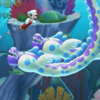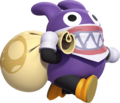New Super Mario Bros. U
New Super Mario Bros. U is a side-scrolling 2.5D platform game, and a launch title for the Wii U. It is the fourteenth installment in the Super Mario series, the ninth installment in the Super Mario Bros. series, and the fourth and latest installment in the New Super Mario Bros. series. Released on November 18, 2012 in North America, November 30th in Europe and Australia, and in Japan on December 8th, it is the first Super Mario series game to be released as a launch title for a home console since Super Mario 64. An expansion pack for this game was later released in 2013, titled New Super Luigi U.
Based upon the New Super Mario Bros. Mii tech demo shown at E3 2011, the game uses new, more detailed background styles and models and introduces the Flying Squirrel power-up, acquired by Mario and his friends from an item called the Super Acorn, as well as utilizing the Wii U GamePad in Boost Mode.
This title can be purchased at retail stores or at the Nintendo eShop, with the digital version requiring 2301.7 MB (approx. 2.25 GB) to be downloaded.
Story
Mario, Luigi, Blue Toad, and Yellow Toad are with Princess Peach in Princess Peach's Castle having dinner together. Bowser and the Koopalings suddenly arrive in their Airships, with the former sporting a giant mechanical fist, that smashes and launches the brothers and the Toads away from the castle. Mario and his friends crash into the Acorn Tree, launching Super Acorns through the area. They then tumble out of the tree, passing a Bubble Baby Yoshi and Balloon Baby Yoshi, while they're at it, and look into the horizon to see Bowser beginning a siege on Princess Peach's Castle, setting the Mario Bros. and the Toads to go on a new adventure and save Princess Peach.
As the game progresses, the view occasionally shifts to Peach's Castle, showing the flags being replaced by Bowser's flags, and the castle being surrounded by a thin tornado-like cloud that is made thicker, entirely obscuring the castle. Mario, Luigi and the Toads also have to deal with Bowser's forces, including the Koopalings, Boom Booms, Kamek and Bowser Jr., who occasionally attacks the heroes with his dad's airship. None of them is enough to stop the heroes from progressing, and Bowser Jr. causes the airship to crash after making the mechanical hand punch through it. After reaching Peach's Castle and defeating Bowser, the group moves onward, but Bowser Jr. appears and urges Kamek to spread his magic across the area. After heading to the castle exterior, Mario and the others see Peach in a tower. Before they can save her, she is locked inside and Bowser appears, now at a giant size. Eventually, Bowser is defeated and Bowser Jr. runs away in fright. Mario (or whomever delivered the final blow to Bowser) gets to Peach and bows down to her, and is then kissed by her, to their shock and delight, as the clouds surrounding the castle disappear, restoring it to its former state.
Outside the castle, the Koopalings and Bowser Jr. are fleeing on the airship as Bowser recovers. Noticing the escaping airship, he climbs up onto one of the castle towers and leaps onto the ship, but his additional weight causes it to plummet into a hill nearby; they then fly away hanging on to Bowser Jr.'s Junior Clown Car while Mario and Blue Toad watch. They then turn back to the others, who are cheering, with Mario delivering a final victory pose.
Gameplay features
New Super Mario Bros. U is a platform game which plays very similarly to that of past New Super Mario Bros. games, especially New Super Mario Bros. Wii, with the return of the 4-player multiplayer functioning identically to the Wii game, while most of the elements and design found in the game make heavy reference to Super Mario World. Many other gameplay elements from the Wii game, such as the Super Guide, Enemy Courses, and the bubble function, also return. In certain modes, players can play as their Miis, including the first player, who can also choose whoever to play as. Power-ups, like the Fire Flower, Ice Flower, Penguin Suit, Propeller Mushroom and the Mini Mushroom return. The game also features a new power-up, the Super Acorn, which gives Mario and company a Flying Squirrel form, which lets them glide and grab on to walls.
New Super Mario Bros. U features two main controller options: single player using the Wii U GamePad, and single player or multiplayer using Wii Remotes and/or Wii U Pro Controllers; the player can switch controllers at any point between the GamePad and a Wii Remote or Pro Controller by pausing the game, either in a level or on the world map, and selecting the "Change Controller" option. The game supports up to five simultaneous players, with up to four being able to play as the characters with a Wii Remote or Wii U Pro Controller, and are able to drop in and out at any point while in a stage by pressing ![]() on the GamePad and selecting a character, or on the map by pausing and selecting "Number of Players". Another player is able to use the Wii U GamePad in what is known as Boost Mode. In Boost Mode, the GamePad player can assist the other players by placing blocks for them to stand on and stunning enemies. Boost Mode can be used at any point when playing with one of the other controllers; when playing with just the GamePad, it supports Off-TV Play.
on the GamePad and selecting a character, or on the map by pausing and selecting "Number of Players". Another player is able to use the Wii U GamePad in what is known as Boost Mode. In Boost Mode, the GamePad player can assist the other players by placing blocks for them to stand on and stunning enemies. Boost Mode can be used at any point when playing with one of the other controllers; when playing with just the GamePad, it supports Off-TV Play.
After clearing Layer-Cake Desert-1, an enemy called Nabbit appears and steals an item from a Toad House connecting that level, heading back to Acorn Plains-1. When the player enters a stage with Nabbit, the objective is to race him to the goal, trying to catch him before he can get away. If the player succeeds in catching Nabbit, they are rewarded with a P-Acorn. Replacing the Toad saving in New Super Mario Bros. Wii, Nabbit only appears in one stage in the first seven worlds.
The first update to the game added Miiverse support. With Miiverse functionality enabled, players can read each others' posts on the world map by viewing the map; when not viewing the map a Miiverse post is indicated by a red balloon, generally near a stage, and can be hidden by pressing ![]() ; when on the World Map while using Boost Mode, the GamePad player can scroll across the map on the GamePad screen and view Miiverse posts. At certain times throughout gameplay, such as when the player dies several times or reaches the end of a course in a specific way (collecting all the Star Coins, clearing in a certain amount of time, clearing without taking damage, etc.), they are given a prompt to post a message to Miiverse. Players can also see Miiverse posts after they die in a stage. Miiverse settings can be changed at any point on the world map by selecting the pencil and envelope icon on the bottom right of the pause menu.
; when on the World Map while using Boost Mode, the GamePad player can scroll across the map on the GamePad screen and view Miiverse posts. At certain times throughout gameplay, such as when the player dies several times or reaches the end of a course in a specific way (collecting all the Star Coins, clearing in a certain amount of time, clearing without taking damage, etc.), they are given a prompt to post a message to Miiverse. Players can also see Miiverse posts after they die in a stage. Miiverse settings can be changed at any point on the world map by selecting the pencil and envelope icon on the bottom right of the pause menu.
Controls
Unlike previous New Super Mario Bros. installments, the jump and run buttons cannot be used at the same time (i.e. shooting fireballs) and the game uses support for the Wii U GamePad and Pro Controller; like them, however, the game uses support for the Wii Remote that is used by shaking to grab objects, Spin Jump, and dismount Yoshi.
Stages
| Action(s) | Wii U GamePad/Pro Controller | Wii Remote |
|---|---|---|
| Move, swim (Baby Yoshi) | ||
| Jump, swim, glide (hold), wall jump, Flutter Jump (Yoshi; hold), double/triple jump (press right upon landing) | Option 1: Option 2: |
|
| Run, carry objects (hold); shoot fireballs/iceballs, extend tongue (Yoshi) | Option 1: Option 2: |
|
| Ground Pound (normal, simultaneous**) | Jump + |
|
| Crouch, slide (on slopes) | ||
| Climb (on fences, ladders, poles) | ||
| Bubble** | GamePad: N/A Pro Controller: |
|
| Enter door/Warp Pipe | Door: Pipe: |
Door: Pipe: |
| Spin Jump, Baby Yoshi abilities, dismount Yoshi, Flying Squirrel jump, spin underwater (Baby Yoshi) | ||
| Grab other players**/frozen enemies | Run + (release run button to throw) |
(release |
| Pause | ||
| Boost Mode** | N/A | |
* Single player only.
** Multiplayer only.
| Action(s) | Wii U GamePad/Pro Controller | Wii Remote |
|---|---|---|
| Move, select option | ||
| Open inventory | ||
| View map | ||
| Pause | ||
| Zoom in/out (map view) | ||
| Confirm, hide/show Miiverse posts (map view) | ||
| Back | ||
Worlds
Template:NSMBUmap Unlike previous New Super Mario Bros. titles, where the worlds are separated like in Super Mario Bros. 3, New Super Mario Bros. U has a seamless world map with areas named after different foods and drinks, similar to Super Mario World. Like New Super Mario Bros. Wii, the Worlds include Toad Houses and Enemy Courses that players will encounter in the game. The music changes instruments throughout the world map similar to Yoshi's Island. Though, like the previous games, there are Towers, Castles and Ghost House-related levels within each part of the world. And like Super Mario World, the worlds are connected jointly.
| Level | Preview | Description | Bosses |
|---|---|---|---|
| World 1 Acorn Plains |
File:NSMBUMap.jpg | A grassy world with plenty of shrubs, slanted mountains, and the Acorn Tree. | Boom Boom Lemmy Koopa |
| World 2 Layer-Cake Desert |
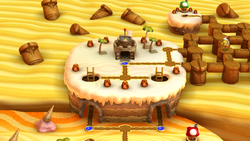
|
A desert world with various desserts, such as melting ice creams, giant cakes, and a sea of sand with Moai-like statues. | Boom Boom Morton Koopa Jr. |
| World 3 Sparkling Waters |
File:SparklingWaters-NSMBU.png | A tropical world with multiple islands, bubbling water geysers, and a sunken ship. This world can be entirely skipped for Frosted Glacier. | Boom Boom Larry Koopa |
| World 4 Frosted Glacier |
File:Frosted Glacier Map.jpg | A snowy world that takes place at night filled with stars and constellations. This world can be entirely skipped for Sparkling Waters. | Boom Boom Wendy O. Koopa |
| World 5 Soda Jungle |
File:SodaJungle-NSMBU.png | A rainforest flooded by purple poisoned water, based on Forest of Illusion and World 4 from Super Mario World and New Super Mario Bros., respectively. | Boom Boom Iggy Koopa Bowser Jr. |
| World 6 Rock-Candy Mines |
File:RockCandyMines.png | A mountainous world with tall, pillar like mountains. A cloud train seems to separate this world from the next world. | Boom Boom Sumo Bro Roy Koopa |
| World 7 Meringue Clouds |
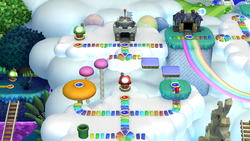
|
A sky world resembling the foreground of levels in World 7 from New Super Mario Bros.. | Kamek Ludwig von Koopa Bowser Jr. |
| World 8 Peach's Castle |
File:Nsmbufinalworld2.png | A grassland area, similar to World 1 from the previous New Super Mario Bros. games, containing mushroom hills and the castle of the princess. It has been taken over by the Koopa Troop and is slowly transformed into Bowser's image until eventually being surrounded by a tornado. By the time the player reaches the castle grounds, it has been transformed into a lava-based area. Princess Peach's castle remains mostly unchanged on the outside but on the inside it is similar to Bowser's Castle from previous installments. This world must be completed to beat the game. | *Bowser Jr. Bowser |
| World 9 Superstar Road |
File:Superstarroad map.png | A secret world unlocked after beating Bowser's final battle. Its levels must be unlocked with the Star Coins collected from all the levels of previous worlds. | None |
| Secret Island | File:Secret Island.PNG | A small area between Acorn Plains and Sparkling Waters that houses a Records Toad House. It must be unlocked as the same way as Superstar Road. | None |
| Coin Courses | File:Coin Courses.PNG | A multiplayer exclusive world found in Coin Battle. | None |
- While fighting Bowser in his immense-sized form, Bowser Jr. cannot be defeated, no matter how many times he is stomped on, but the players can stomp on him to hijack his Clown car to ride on it to hit it on Bowser's head.
Yoshis
Green Yoshis make a return, acting like in New Super Mario Bros Wii. Green is the only color available for Yoshis that the players ride on, unlike New Super Mario Bros. Wii. Yoshi now has a meter that tracks how many berries he eats, instead of showing a number each time he eats one. As usual, eating 5 makes him lay an egg containing an item. Like in New Super Mario Bros. Wii, Green Yoshi isn't able to leave the courses he appears in.
New Super Mario Bros. U also features the return of Baby Yoshis, having been absent from the Super Mario series since their debut in Super Mario World. The game features three differently-colored Baby Yoshis, each one with a special ability. They differ from the adult Green Yoshi in terms of gameplay. Being babies, they can't be ridden, so characters must carry them throughout the levels. Baby Yoshis also instantly eat almost any enemy that is in front of them. Unlike in Super Mario World, Baby Yoshis don't grow into adults after eating several enemies. Two types of Baby Yoshis found on the overworld can be taken into any course, with the exception of Fortresses, Airships and Castles.
| Baby Yoshi | Description |
|---|---|
| File:ToadBabyYoshiNSMBU.PNG Bubble Baby Yoshi |
Blue Baby Yoshis that blow bubbles from their mouths. Enemies caught in these bubbles will turn into 3 Coins, a power-up or a 1-Up Mushroom. These bubbles can also be used as miniature platforms. They first appear on the Frosted Glacier map area. |
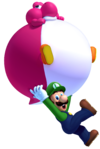 Balloon Baby Yoshi |
Magenta Baby Yoshis that expand like balloons and gently float in the air. These Baby Yoshis are similar to the Blimp Yoshi power-up, found in Super Mario Galaxy 2. They first appear on the Acorn Plains map area. Additionally, up to 4 players can grab on to one Baby Yoshi, by grabbing their legs. This slows the player down though. |
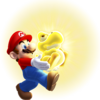 Glowing Baby Yoshi |
Yellow Baby Yoshis that light up dark areas and can stun enemies with their light attack. These Baby Yoshis act similar to the Light Blocks, found in New Super Mario Bros. Wii, and also Bulb Yoshi from Super Mario Galaxy 2. Unlike the other two Baby Yoshis, the Glowing Baby Yoshis aren't found on the world map, and are only found in courses such as Perilous Pokey Cave. Instead of following the characters throughout the courses, they give an extra life when reach the end of the levels they appear in. |
Inventory
The world map inventory, seen in Super Mario Bros. 3 and New Super Mario Bros. Wii, returns in New Super Mario Bros. U, allowing players to store items that can be used before entering a level. Unlike the other inventories, this is limited to ten items only. If more items come in, the player will have to discard items from the inventory until they have ten. Players can gain items into their inventory by playing red Toad House minigames, collecting items on the world map itself, completing an Enemy Course, catching Nabbit, or finishing a level with the final two digits of the time matching.
Extra modes
In addition to the main adventure, New Super Mario Bros. U features three additional bonus modes to play. The first of these is Challenge Mode, in which players must complete a given objective on a given stage, some within a specific time limit. In most cases after the player completes a challenge they are ranked with a medal depending on how well they did. There are five types of challenges: Time Attack, Coin Collection, 1-Up Rally, Special, and Boost Mode.
Another mode is Boost Rush Mode, where players have to reach the end of two or three selected stages in the lowest possible time, similar to the Coin Rush mode featured in New Super Mario Bros. 2. Unlike Coin Rush, the stages scroll automatically, meaning the player has to keep up with the stage, which speeds up every time they collects coins.
Coin Battle from New Super Mario Bros. Wii is also available. However, in this version of the mode players can be grouped into teams against each other or play free-for-all, rather than just the latter. The Wii U GamePad can also be used for Coin Edit, in which the GamePad is used to customize the coin placement in the Coin Battle-exclusive courses.
Characters
Playable
- Mario - New Super Mario Bros U.png
- Luigi - New Super Mario Bros U.png
- MiisNSMBU.png
Mii (only in Flying Squirrel Ovation)
Bosses
- MegaSumoBro..png
Sumo Bro (Tower)
- KamekNSMBW.png
Kamek (Tower)
- NSMBU LarryKoopa.png
- WendyNSMBU.png
- IggyNSMBU.png
- RoyNSMBU.png
Supporting
- MagentababyyoshiNSMBU.png
- BluebabyyoshiNSMBU.png
Transformations
(starting form) |
(Super Mushroom required) |
(New, Super Acorn required) |
(Fire Flower required) |
(Ice Flower required) |
(Mini Mushroom required) |
(Super Star required) |
(New, P-Acorn required) |
(Propeller Mushroom required) |
(Penguin Suit required) |
Enemies
New
Returning
Features
Power-ups
Items
Reception
New Super Mario Bros. U has received generally positive reviews. The game currently maintains an 84 average on both Metacritic[1] and GameRankings[2]. GameXplain gave the single-player and multi-player modes 4 stars out of 5[3], IGN gave it a score of 9.1 out of 10[4], EGM[5] gave a score of 9/10, Joystiq gave it 4.5 stars out of 5[6], Polygon[7] and Destructoid[8] gave the same score of 8.5/10, VentureBeat[9] gave it a score of 83/100 (83%), Games Radar gave it 4 stars out of 5[10], and Gamespot gave a score of 8.5[11].
The game has been praised for its balanced gameplay and challenge mode, with IGN's Rich George describing it as "the best thing to come to Mario's world since 3D", while criticizing it as not pushing the Wii U's visuals and audio potential. He also stated, "though it doesn’t necessarily redefine Nintendo’s iconic hero, it still manages to capture the sense of carefree adventure that many of us felt as kids." He also criticized the game's "weak graphics and audio, plus the return of the irritating chaotic, bouncy multiplayer mode." He praised the progressing difficulty in the game and the additional difficulty of Challenge Mode.
As of March 31, 2014, New Super Mario Bros. U is the best selling game for the Wii U, having sold about 4.16 million copies worldwide.
Updates
Release date: November 18, 2012
Released at launch, the first update adds the game's Miiverse funtionality.
Release date: March 15, 2013[12]
The second update causes any Miiverse posts made in-game to be posted to a separate "Game Posts" community rather than the standard community.
Release date: June 20, 2013[13]
The third game update adds the ability for the game to receive the New Super Luigi U downloadable content and puts a prompt in-game to go to the Nintendo eShop to download it. The update also adds support for the Wii U Pro Controller.
New Super Luigi U
- Main article: New Super Luigi U
In July 2013, as part of the Year of Luigi celebration, a large-scale expansion pack titled New Super Luigi U was released as downloadable content for New Super Mario Bros. U on the Nintendo eShop, and was later released as a standalone title at retail. The pack contains 82 new courses in place of the original ones, featuring Luigi as the main character in the place of Mario, who does not appear at all within the game.
The game features the same multiplayer, with the option of playing as Yellow Toad, Blue Toad, or Nabbit (who cannot power-up like the other characters, but is impervious to enemy damage). The game features similar physics to that of Luigi's style of gameplay in Super Mario Bros.: The Lost Levels, in that the characters run faster and jump higher but stop slower. The levels have also been designed to be more challenging, with each one being shorter and featuring a 100 second time limit.
The Mario & Luigi Deluxe Set Wii U bundle released in November 2013 includes with it both games put onto one disk, titled New Super Mario Bros. U + New Super Luigi U. In addition to being a compilation of both games, this release includes several bonus videos.
Development
As stated above, New Super Mario Bros. U was based upon the New Super Mario Bros. Mii Wii U experience demo shown off at E3 2011.[14] A translation of a Spanish online magazine revealed that the new title was in development and would be revealed at E3 2012,[15] with the game fully revealed to be New Super Mario Bros. U during the E3 trailer.[16]
New Super Mario Bros. U began development soon after the completion of New Super Mario Bros. Wii, using pre-existing elements from the Wii game, as development equipment for Wii U didn't exist at the time.[17] The game's singular, interconnected world map was inspired by the one seen in Super Mario World; Masataka Takemoto desired to take the map from that game and use the Wii U in order to recreate and expand upon the concept.[18] The map being seamless also had a role in Miiverse integration, as with the setup of the map it was possible to display comments across each of the levels.[19] The concept of drop-in play with one player on the Gamepad placing blocks was brought up early in development. When the Wii U Gamepad was brought up during development, the team began to conceptualize ways to use it, talking specifically about the drop-in play. Wanting to make a feature with "controls that you can understand right away with no explanation," the concept of using the GamePad to place blocks the other players can jump on went through.[17]
Challenge Mode was based upon the idea of setting a self-challenge in previous games, as well as the challenge site for New Super Mario Bros. Wii. Because of ideas like this, the developers decided to put the Challenge Mode into the game from the beginning. The challenges were created with all types of skill levels in mind.[20]
Boost Rush Mode was based on the Free-for-All Mode featured in New Super Mario Bros. Wii, in that they wanted a similar mode for playing the main game stages in short bursts. The developers tried connecting courses together and playing them through, but found it uneventful; they then added the concept of collecting coins resulting in the screen scrolling faster, and found it to fit a Super Mario-style of gameplay.[18]
Pre-release and unused content
Miis were originally going to be playable in the game's Story Mode. In the final games, Mii playability is restricted to the bonus modes. Additionally, Boost Mode was also originally titled "Assist Play". The Acorn Plains map as seen in the E3 showcase for the game is also very different from the version seen in final game.
Gallery
- NSMBU FourCharacters.png
The playable cast
Bowser Jr. riding the Junior Clown Car and holding a Bob-omb
- Squirrel Mario NSMBU.png
Luigi with a Balloon Baby Yoshi
- WiiU NewMarioU 1 illu01 E3.png
Group artwork
- NSMBUMap.jpg
The Acorn Plains map
Glitches
- Main article: List of New Super Mario Bros. U glitches
By entering a Warp Pipe or door in any stage exactly when the timer hits zero, the player does not die, and they can explore the level indefinitely.
Staff
- Main article: List of New Super Mario Bros. U staff
New Super Mario Bros. U was produced by Takashi Tezuka and Hiroyuki Kimura, with Masataka Takemoto as the director and Tsutomu Kaneshige and Shinichi Ikeamtsu as the general coordinators. Satoru Iwata was the executive producer, with the general producer being Shigeru Miyamoto. Masanobu Sato was the lead designer, and Shiro Mouri was the programming director. The music was composed by Shiho Fujii and Mahito Yokota, with Koji Kondo as sound adviser.
References to other games
- Mario Bros.: Coin Courses-2 is based on the levels in this game with similar platforms and Koopa Troopas acting like as Shellcreepers.
- Super Mario Bros.: In the final battle with Bowser, when Mario hits the switch, it causes an axe to fall and break the bridge. Sprites from this game are used in the game menus.
- Super Mario Bros. 3: Boom Booms are fought as the mid-boss of each world. The Super Acorn is comparable to the Super Leaf as it has a P-variation. The Koopalings, which originated from this game, have airships once again. When the player(s) go to the cannon to blast onto a Koopaling's airship, the airship theme from Super Mario Bros. 3 plays in the background.
- Super Mario World: When Mario reaches the haunted part of Soda Jungle, the screen fades into the submap similar to how it fades in and out in this game. Also, the world map is connected again and a ghost ship, similar to the Sunken Ghost Ship level, appears in this game. The Warp Pipes have a similar structure to Super Mario World. Most of the worlds are named after food again. Some of the world's features are similar to those found in Dinosaur Land (e.g. Acorn Plains having jagged mountains or Soda Jungle being one-third based on the Forest of Illusion). Super Mario World has the exact same number of exits this game has: 96.
- Super Mario World 2: Yoshi's Island: The name of the Challenge "Spin Jump, Get Dizzy" is a reference to that of a level from this game, Touch Fuzzy, Get Dizzy.
- Super Mario Advance 4: Super Mario Bros. 3:The Boost Blocks used the Spade Panels' symbols.
- Super Mario 3D Land: Boom Boom's voices are reused, as well as the motion patterns of some of the enemies.
- Mario Kart 7: The Miis reuse their voice clips from this game.
- New Super Mario Bros. 2: The Jump Block sounds are reused. The Goal Pole also produces the flag containing the emblem of the topmost character, also seen in this game.
- Paper Mario: Sticker Star: The Ghost House doors use the design from The Enigmansion in this game rather than the one from New Super Mario Bros. Wii. The Bony Beetle's design is reused. Also, Bowser Jr. uses the same glass dome in his clown copter as in this game.
References in later games
- Mario Kart 8: Mecha Cheeps reappear in the underwater sections of Water Park.
- Mario Golf: World Tour: Layer-Cake Desert, Sparkling Waters, and Rock-Candy Mines appear as downloadable courses in this game. Some pieces of Mii gear are based upon both Nabbit and the boss Sumo Bro, both of which originate from this game. Nabbit returns as a downloadable playable character.
- Super Smash Bros. for Wii U: A stage based on New Super Mario Bros. U, Mushroom Kingdom U, appears in this game.
- Super Mario Maker: The fourth game style in this game is based on New Super Mario Bros. U.
Names in other languages
Trivia
- This is the only game in the New Super Mario Bros. series to be a launch title.
- If the Miis are selected as P1, they will be colored like Mario. If P2, they will be colored like Luigi. If P3, they will have yellow shirts and purple overalls, similar to Wario. If P4, they wear blue shirts and dark blue overalls, similar to Luigi's light blue alternate costume from the Super Smash Bros. series.
- When the player grabs a Baby Yoshi, an additional choir is added to the music, while Baby Yoshi chants accordingly.
- When the Mario Bros., Toads, or Miis aren't moving, they stop and stare at the screen until the player starts moving them again.
- New Super Mario Bros. U is the first New Super Mario Bros. game where playable characters start out the first level away from Princess Peach's Castle. It is also the first 2D Mario game where the players get to see the interior areas of Peach's Castle, not counting going inside to see videos in New Super Mario Bros. Wii.
- If one counts Secret Island and the Coin Courses, New Super Mario Bros. U has the most areas/worlds in the New Super Mario Bros. series, at eleven worlds, and the most courses, at ninety-four courses.
- Sometimes, on the title screen, Luigi almost trips over instead of jumping and ground-pounding the ground.
External links
- American Website for New Super Mario Bros. U
- European Website for New Super Mario Bros. U
- Japanese Website for New Super Mario Bros. U
- Official YouTube channel of New Super Mario Bros. U
References
- ^ [1]
- ^ [2]
- ^ [3]
- ^ [4]
- ^ [5]
- ^ [6]
- ^ [7]
- ^ [8]
- ^ [9]
- ^ [10]
- ^ [11]
- ^ Bonds, Curtis (March 15, 2013). v.1.2.0 Released for New Super Mario Bros. U. Nintendo World Report. Retrieved November 28, 2014.
- ^ New Super Mario Bros. U Update Allows Wii U Pro Controller Use. My Nintendo News (June 20, 2013). Retrieved November 28, 2014.
- ^ Mario Wii U "Based On" New Super Mario Bros. Mii Wii U News @ Nintendo Life
- ^ Miyamoto To Show Wii U Mario at E3 - Wii News @ Nintendo Life
- ^ Wii U - New Super Mario Bros. U E3 Trailer
- ^ a b Iwata Asks : New Super Mario Bros. U : "What Should Be New?"
- ^ a b Iwata Asks : New Super Mario Bros. U : One Map
- ^ Iwata Asks : New Super Mario Bros. U : Reading the Posts in your Hands
- ^ Iwata Asks : New Super Mario Bros. U : "Mottainai (What a Waste)!"
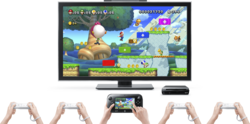
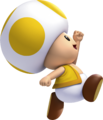
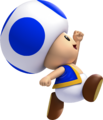



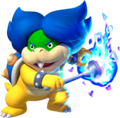
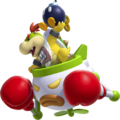
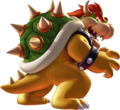
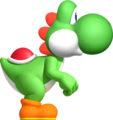
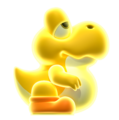
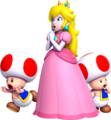

![Artwork of Fire Mario in New Super Mario Bros. (also used in New Super Mario Bros. Wii and Super Mario 3D Land)[1][2]](https://mario.wiki.gallery/images/thumb/8/8a/Fire_Mario.png/185px-Fire_Mario.png)

